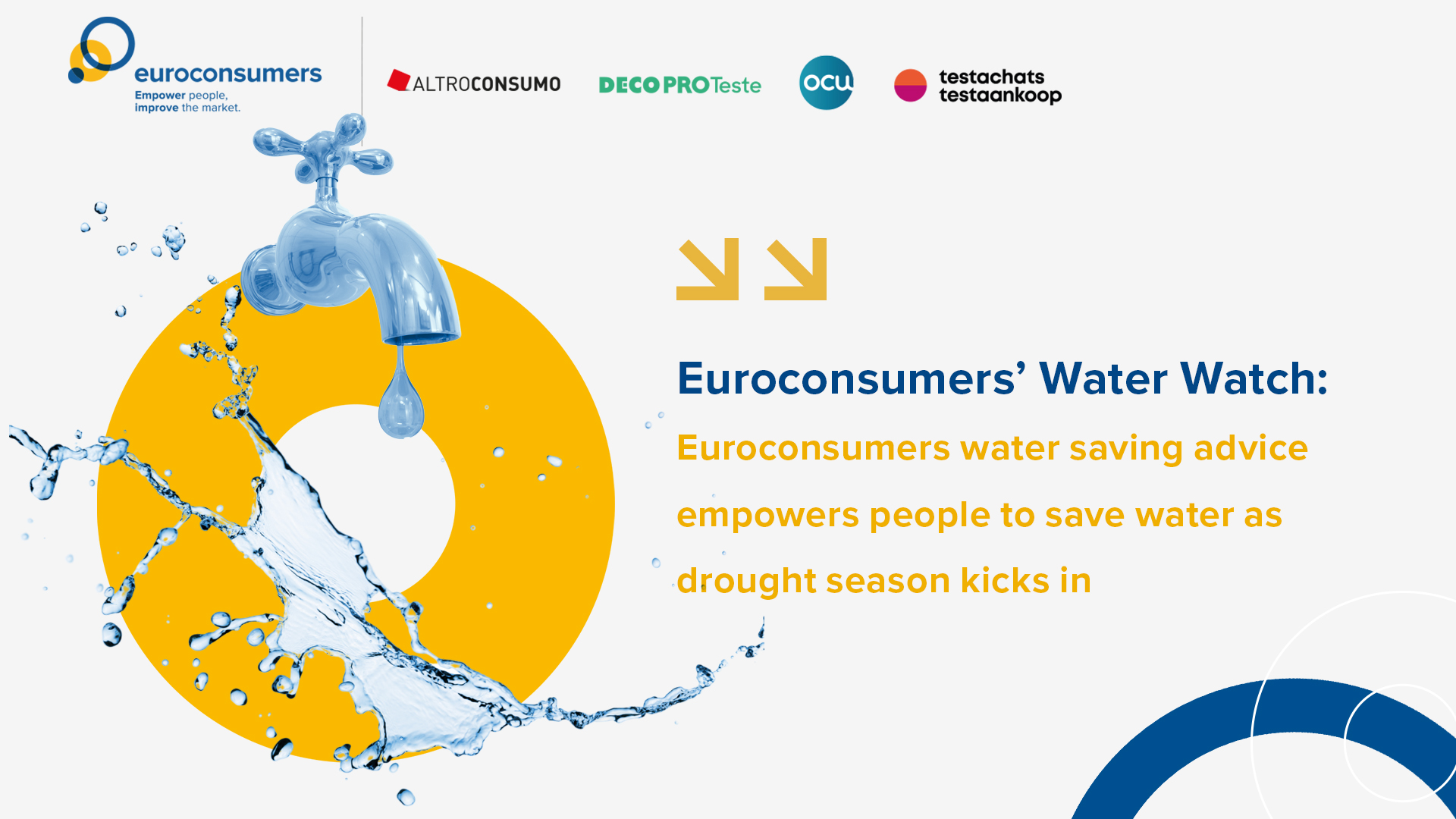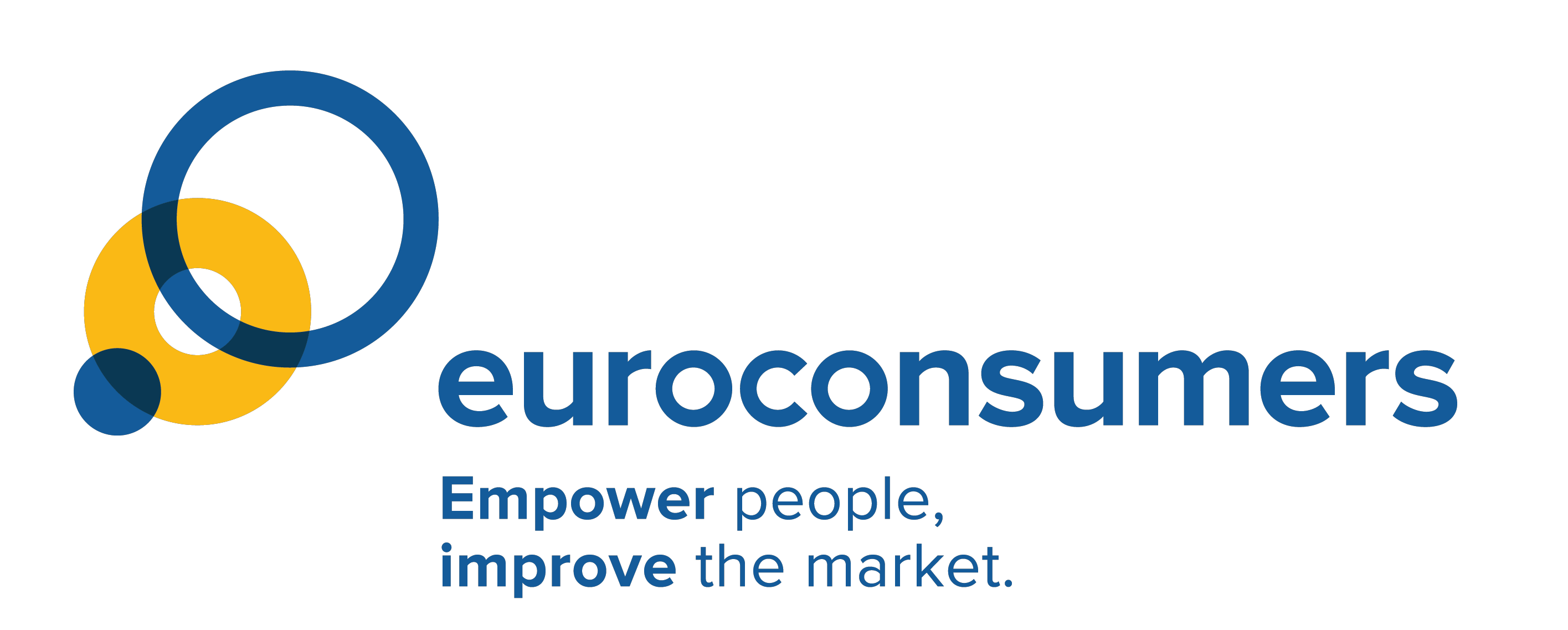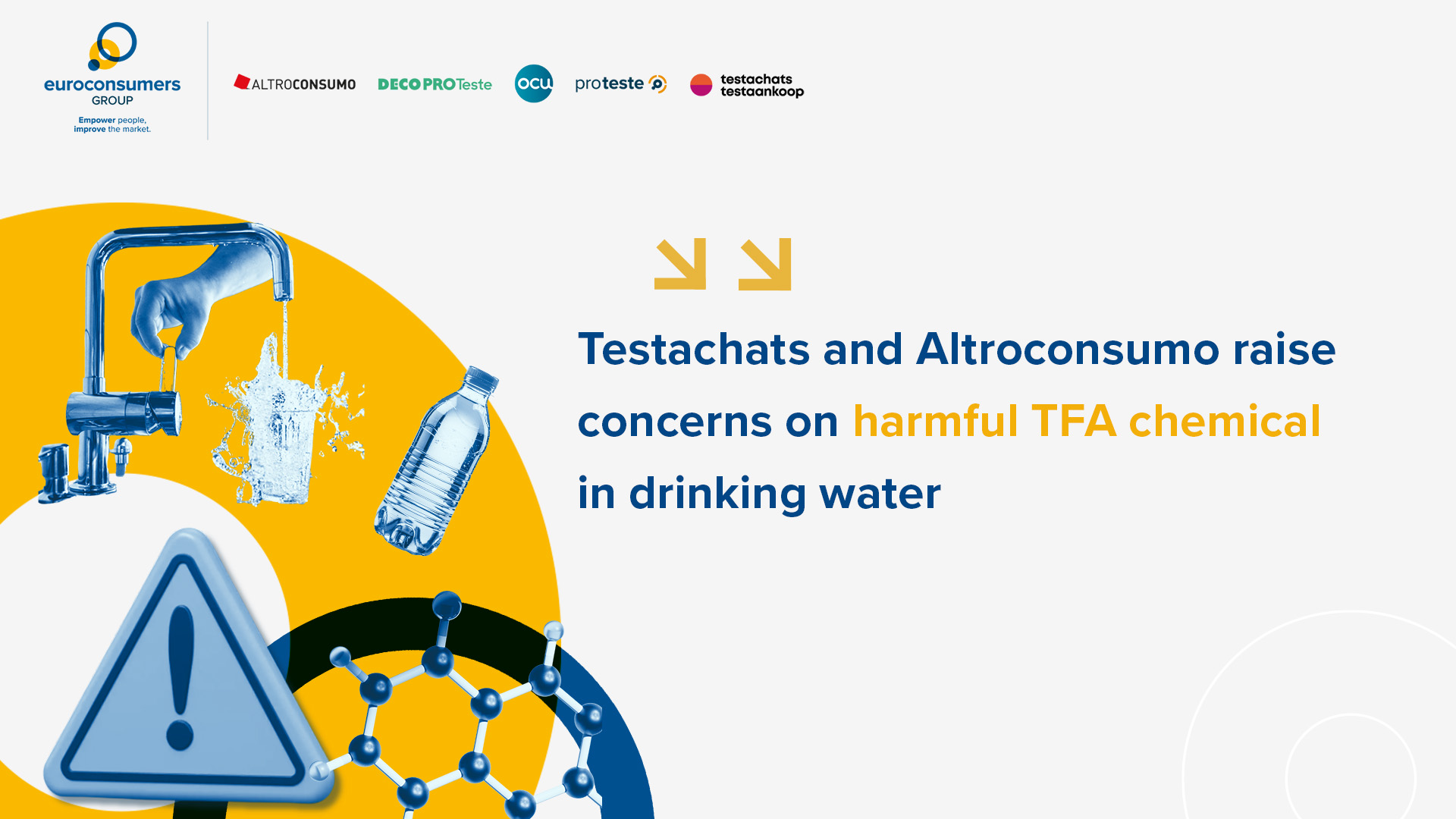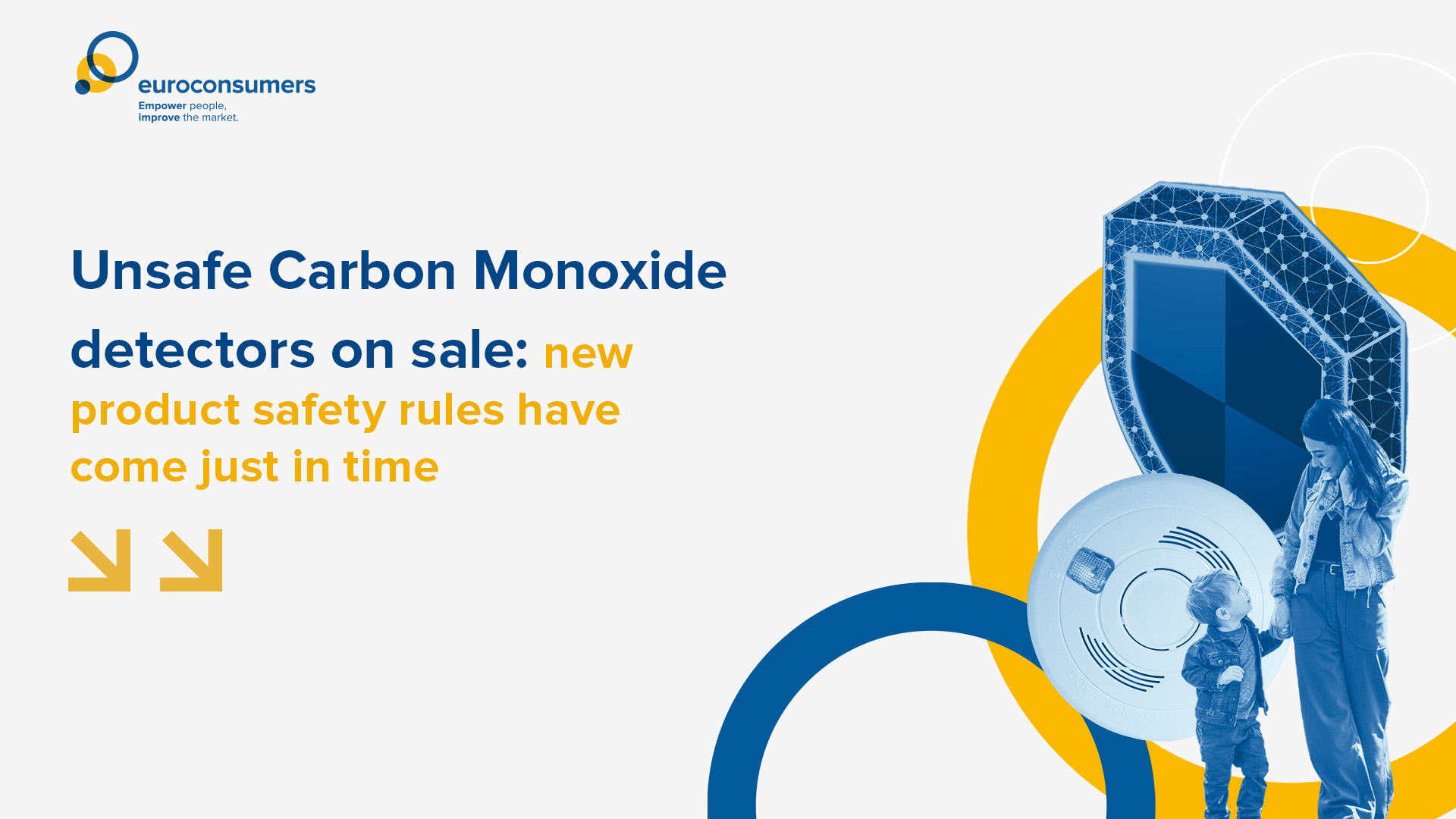This summer, EuroconsumersŌĆÖ members in Belgium and Italy raised concerns about the quality of the water we drink, and the harmful chemicals that lurk in water pipes, bottles and fountains.
In May and July, Altroconsumo tested bottled natural mineral water and public drinking fountain water for overall quality. Testachats/Testaankoop also ran comparison tests between tap and bottled water to check for potential contaminants and safety.┬Ā┬Ā┬Ā
What is polluting drinking water?┬Ā
Euroconsumers organizations were particularly concerned about traces of a type of pollutant called PFAS (per- and polyfluoroalkyl substances) which include TFA (trifluoroacetic acid).┬Ā┬Ā
PFAS are contaminants called ŌĆśeternal pollutantsŌĆÖ or ŌĆśforever chemicalsŌĆÖ due to their resistance to natural decomposition processes and long term accumulation in humans, animals and the environment. According to the European Chemicals Agency, some PFAS are toxic to reproduction, potentially cause cancer and may disrupt the human hormonal system.
TFA is classed as an ŌĆśultra short chain PFASŌĆÖ and it doesnŌĆÖt significantly bio-accumulate in humans or animals, but the impact of continual and widespread exposure to TFA on environmental systems and human health is becoming a major concern as levels in water supplies rise.
The full health impacts of chronic exposure to TFAs are still being studied, but the European Environment Agency (EEA) says TFA is increasingly widespread in European aquifers, and its growing presence poses a real threat to the quality of drinking water.┬Ā
Worries are also mounting about the lack of treatment options to eradicate TFA in drinking water. Countries like Belgium have used black carbon filter technology to eliminate some PFAS from drinking water, but effective remedies for removing TFA remain elusive.
What protections are in place to keep drinking water safe?
Given the growing concerns about TFA, consumers might expect quality controls to be in place. But the current regulatory set up which deals with drinking water and groundwater in different pieces of law has left a major gap in TFA monitoring and testing.
Monitoring for TFA in drinking water is not obligatory in the EU, and although there are standard measures for total PFAS in the forthcoming Drinking Water Directive, TFA monitoring will not be explicitly integrated yet.
Under the directive, new PFAS limits will apply from 2026, but the European Commission is waiting on an evaluation on health impacts from the WHO in 2027 before defining TFA limits.┬Ā
┬ĀHowever, since TFA was recognised as a breakdown product (or pesticide metabolite) of a banned pesticide, there are limits for TFA in groundwater under the Pesticides Directive.┬Ā
So weŌĆÖre left with a confusing situation where TFA is classified as a PFAS according to the OECD definition, but not considered a PFAS by European drinking water legislation. And where TFA is subject to limits in groundwater, but not in drinking water.┬Ā┬Ā┬Ā
For now, the different approaches and timing of implementation around TFA leaves a major regulatory gap.
What did EuroconsumersŌĆÖ members drinking water tests find?┬Ā┬Ā
Drinking water watch: Italy
Altroconsumo tested 21 popular brands of natural mineral water, and found that even bottled water with its promises of freshness and purity cannot escape the pollutants in the water ecosystem.
Five of the 21 bottled waters tested were found to contain excessive levels of TFA. Although no other types of PFAS were found in the samples, the presence of TFA in almost a quarter (24%) of these widely available brands is very concerning for the bottled water market as a whole.
They followed up this test with an analysis of the drinking water found in many Italian citiesŌĆÖ public ŌĆśwater housesŌĆÖ. Water houses are the modern equivalent of drinking fountains, dispensing drinking water from the public supply via kiosks to people on the move. TheyŌĆÖve become popular over the last 10-15 years and are playing a role in breaking ItaliansŌĆÖ waste-heavy bottled water habit.
The team at Altroconsumo took samples from ten locations that shared the same water source as the bottled mineral waters tested in May 2025, and from four major Italian cities of Milan, Florence, Sondrio and Turin (where two samples were taken).┬Ā┬Ā
After repeating the tests on bottled mineral waters to identify chemical content of water, they found:┬Ā┬Ā
TFA was detected in all 15 samples analyzed, with concentrations ranging from 274 to 920 nanograms per litre (ng/l)
The concentrations of TFA are similar in the publicly available drinking water and the bottled mineral water. In 8 out of 10 cases, the bottled water had slightly higher levels of TFA than those found in the public fountains using the same water source.┬Ā
This not only confirms the widespread presence of TFA in the whole water cycle but just how difficult it is to pinpoint the origin of the contaminant in the supply chain.┬Ā ┬Ā
Drinking water watch: Belgium
Meanwhile, in Belgium our member Testachats/Testaankoop carried out tests on both tap water and bottled water.┬Ā┬Ā
Their analysis of tap water from 20 Belgian municipalities and of 30 different types of bottled water detected trace levels of contaminants, and all remained below current safety standards.┬Ā
This confirms that both bottled and tap water in Belgium are safe to drink. But this is not the end of the story. The presence of┬Ā TFA and other pesticide metabolites even in very small quantities, is concerning due to their persistence in the environment and the absence of effective removal methods.┬Ā
LetŌĆÖs look in more details at those trace levels of contaminants:
- ŌĆó Pesticide metabolite VIS-01above the European standard of 100 ng/l for pesticide metabolites was detected in one tap water sample and desphenylchloridazon in several samples of both bottled and tap water.┬Ā
- ŌĆó 19 out of the 20 tap water samples and 60% of bottled water samples (18 out of the 30) contained TFA.
- ŌĆó Of the 30 bottled water samples analysed, 11 had a TFA concentration of between 100 and 500 ng/Ll. This exceeded the maximum value of 100 ng/L TFA set for groundwater by the European Commission in May 2025.┬Ā
- ŌĆó One bottled sample also contained TFA that exceeded the impending European limit of 500 ng/L for the total of PFAS allowed, under the EU Directive 2020/2184 which will apply from 2026, and 15 tap water samples exceeded this limit for TFA only.
As explained before, the presence of these substances even in very small quantities is concerning due to their persistence in the environment and the uncertainty over their impact on health. While they remain within current legal limits they certainly merit closer ongoing monitoring.
A dangerous water quality monitoring gap┬Ā
The consumer testing exposes a dangerous water quality monitoring gap at the heart of drinking water safety. The drafting of current guidelines does not explicitly consider TFA to be a type of PFAS. This puts the reassurance that PFAS levels in drinking water are ŌĆśsafeŌĆÖ into a new light and obscures critical information on safety and quality from consumers.┬Ā┬Ā
TFA limits for drinking water urgently needed to keep it safe
ItŌĆÖs clear that headline results on water quality need to be read with some caution, given that current contaminant limits mean water can technically be classed as safe yet still raise major concerns.┬Ā
Filling this gap with a TFA-specific threshold for drinking water will enable better monitoring and action on contaminants, help guard against risks to human health and potentially encourage more intelligence on where contamination originates.┬Ā
Action now on PFAS and TFA┬Ā
European authorities are currently assessing the health and environmental effects of TFA and until then the EU limit of 0.50 ┬Ąg/L for total PFAS provides an important harmonised baseline for countries. But given the scientific uncertainties around substances like TFA, member states must be able to retain flexibility to set stricter values where needed.┬Ā
In Italy, Altroconsumo wants their national government to support the European Chemicals Agency’s (ECHA) proposal to restrict the use of PFAS and the EU to ban PFAS in the production of anything where a valid alternative exists, in order to protect health and the environment.┬Ā ┬Ā┬Ā
In Italy, new limits for drinking water will apply from January 2026, these include a stricter limit for PFAS of 0.10 n/l and a brand new limit for TFA of 10n/l.┬Ā
In Belgium, our member wants higher requirements for such an essential product, and calls on public authorities and water suppliers to raise standards and improve filtration processes.┬Ā┬Ā
Euroconsumers and its members want transparency and safety to be prioritised in access to public drinking water. Regulatory interventions will help improve the drinking water system – a system that must face up to the long term challenge of a slow build up of contaminants.
Euroconsumers Water Watch extra: OCU calls out misleading advertising of ŌĆśnatural mineral waterŌĆÖ
Meanwhile, EuroconsumersŌĆÖ Spanish member OCU has also been paying close attention to the ingredients in bottled water and in particular, the claims made by one home delivery water dispenser provider. Aquaservice is a home delivery water dispenser provider that distributes large 20 litre water dispensers to workplaces and homes.┬Ā
Aquaservice markets the water as ŌĆśnatural mineral waterŌĆÖ, but later on the label and other parts of the website describe it as a ŌĆśrefreshing drink based on natural mineral waterŌĆÖ.┬Ā These ambiguous descriptors donŌĆÖt just cause confusion but contravene food information regulations.┬Ā
In fact, for many other products, the term ŌĆ£natural mineral waterŌĆØ is legally protected. It canŌĆÖt just be used as a marketing label, itŌĆÖs a designation with strict criteria. Anything that does not meet that criteria cannot be named, advertised or sold as such.┬Ā
OCU then go further and challenge that the water on offer should even be called a ŌĆśrefreshing drinkŌĆÖ when strictly speaking, it is ŌĆśprepared drinking waterŌĆÖ under Spanish food laws.┬Ā
OCU have filed a complaint with the Spanish consumer authority (CNMC) about Aquaservice for breaking consumer and food regulations, asking them to open disciplinary proceedings against the company.┬Ā┬Ā





